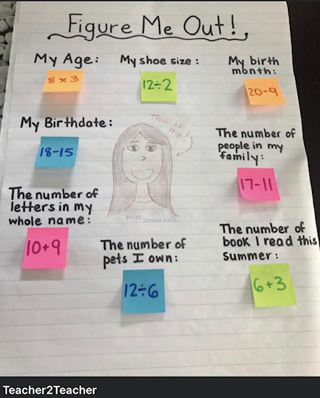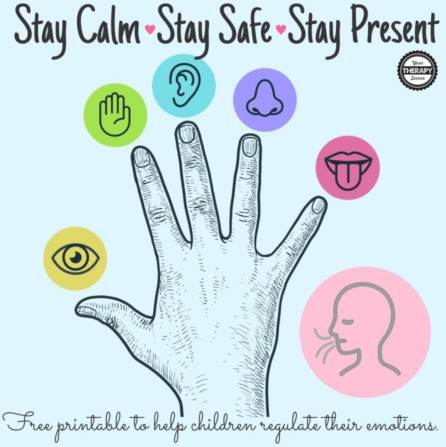SEL-Focused Back to School Activities
CategoriesAs usual, the summer seems to be going by far too quickly. Even with plenty of sand left in the hourglass of summer, I start feeling the back-to-school jitters every August.
Focusing on the social and emotional learning (SEL) needs of students – as well as my own needs – has always been a helpful and comforting way for me to transition into back-to-school mode. This article includes some of my favorite SEL-focused activities and resources to start the new school year strong.
Foster Relationships with and Among Students

I love this “Figure Me Out” activity (pictured above) by Teacher2Teacher! What a fun way to build relationships while getting creative with math! This activity can easily be adapted for all grade levels.
This list by Panorama Education includes 101 inclusive and engaging get-to-know-you questions. For example:
-
If you could be an animal for a day, what would you be and why?
-
What is your most frequently used or favorite emoji?
-
What is a big world problem that you would like to change?
-
What do you think is the most important quality for a teacher to have?
-
What would be your dream field trip?
-
Would you rather travel back in time or travel to the future?
-
Would you rather do your homework or do chores?
Celebrate Students’ Names and Identities
Invite students to personalize their own license plates using this template from Education World. Instruct students to feature their name, along with the state or country of their choice on their license plates. (Show students examples of license plates from around the country and around the world.) Encourage students to illustrate designs to represent their interests and identities. Take it a step further by having students include an illustration of their favorite mode of transportation (bike, Jeep, convertible, airplane, boat, etc.) for their license plates to be attached to.

Photo Credit: https://www.etsy.com/market/license_plate_art
Cultivate Calm Minds
Feeling anxious? Back-to-school jitters are normal for both educators and for students. In this article, Dr. Harry Wong shares five steps to ease anxiety while creating a safe, productive, and positive learning environment.
The 5-senses grounding technique can help with emotional regulation and anxiety for children and adults.
Here’s how it works:
Relax your body, take a few deep breaths, and focus on the following:
-
5 things you can see (my computer, trees outside the window, my water glass, the calendar, post-it notes)
-
4 things you can feel (the warm sunlight, fan blowing, the computer keys, watch on my wrist)
-
3 things you can hear (the TV, the fan, a clock ticking)
-
2 things you can smell (fresh air from the window, laundry detergent on clothes)
-
1 thing you can taste (toothpaste)

Image Credit: https://www.yourtherapysource.com/blog1/2020/07/03/5-senses-grounding-exercise-pdf-freebie/
The 4-7-8 breathing technique, developed by Dr. Andrew Weil, is a tool that I take with me wherever I go. The technique basically involves breathing in for 4 seconds, holding your breath for 7 seconds, and breathing out for 8 seconds. I repeat the steps 3-5 times and almost always feel more balanced and calmer within moments.
In this video, resilience expert Linda Graham guides viewers through three quick, yet powerful mindful practices that you can do with students. These practices include:
-
Affectionate Breathing
-
The Hand Over Heart Practice
-
A Visualization Practice to Call on a Compassionate Friend
If you’re feeling inspired and wondering how you will weave SEL into your own classroom, we have courses that can help!
- Introduction to Social and Emotional Learning (SEL)
- Social and Emotional Learning: Promoting Positive Mental Health Across the Curriculum
- Social and Emotional Learning (SEL): Integrating and Measuring Essential Skills in Traditional and Virtual Classrooms
Here are a few classes related to this topic:
 Social and Emotional Learning: Promoting Positive Mental Health Across the Curriculum
Social and Emotional Learning: Promoting Positive Mental Health Across the Curriculum
 Trauma, Stress, and Anxiety in Schools: Finding Hope and Building Resilience
Trauma, Stress, and Anxiety in Schools: Finding Hope and Building Resilience
 Refocusing Attention: Tackling Student Distractions by Gaining Their Attention
Refocusing Attention: Tackling Student Distractions by Gaining Their Attention